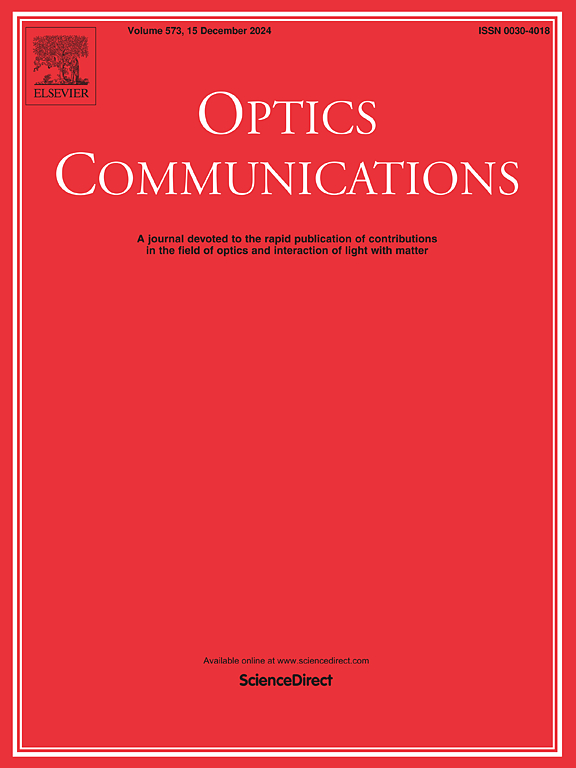通过 PSF 补充分割实现无透镜光场成像
IF 2.2
3区 物理与天体物理
Q2 OPTICS
引用次数: 0
摘要
本文章由计算机程序翻译,如有差异,请以英文原文为准。
Lensless light-field imaging through complementary segmentation of PSF
Light field imaging is applied in fields like virtual reality, 3D reconstruction and medical imaging by capturing spatial and angular information of light to enable more immersive and flexible visual experiences. However, light-field imaging systems often face challenges such as high complexity and limited resolution. In recent years, lensless imaging systems have garnered significant attention for their potential to overcome the limitations of traditional lens-based architectures. Despite their advantages, lensless light-field imaging suffers from notable errors in light-field reconstruction. This paper presents an enhanced Point Spread Function (PSF) segmentation method for lensless light-field imaging, designed to improve the quality of light-field reconstruction. The proposed approach initially divides the PSF into pairs of complementary sub-aperture PSFs, with one PSF targeting the desired sub-aperture area and the other serving as an auxiliary for reconstruction. This allows for the separate reconstruction of sub-aperture images for each area. To assess the light-field reconstruction performance, the imaging quality and angular consistency of various PSF segmentation methods are compared using digital refocusing, epipolar plane images (EPI), depth maps, peak signal-to-noise ratio (PSNR), and structural similarity index (SSIM). Furthermore, the effectiveness of the proposed methodology is validated through experimental results and theoretical analysis. It is demonstrated that lensless light-field imaging using complementary segmentation of the PSF achieves high-quality light-field reconstruction.
求助全文
通过发布文献求助,成功后即可免费获取论文全文。
去求助
来源期刊

Optics Communications
物理-光学
CiteScore
5.10
自引率
8.30%
发文量
681
审稿时长
38 days
期刊介绍:
Optics Communications invites original and timely contributions containing new results in various fields of optics and photonics. The journal considers theoretical and experimental research in areas ranging from the fundamental properties of light to technological applications. Topics covered include classical and quantum optics, optical physics and light-matter interactions, lasers, imaging, guided-wave optics and optical information processing. Manuscripts should offer clear evidence of novelty and significance. Papers concentrating on mathematical and computational issues, with limited connection to optics, are not suitable for publication in the Journal. Similarly, small technical advances, or papers concerned only with engineering applications or issues of materials science fall outside the journal scope.
 求助内容:
求助内容: 应助结果提醒方式:
应助结果提醒方式:


